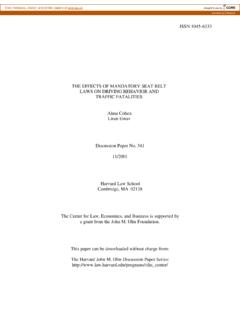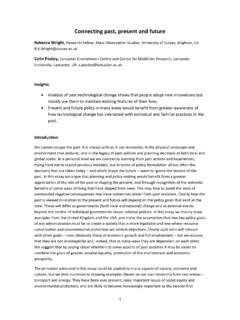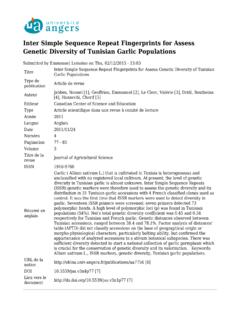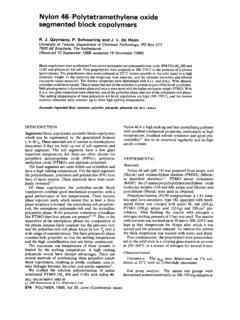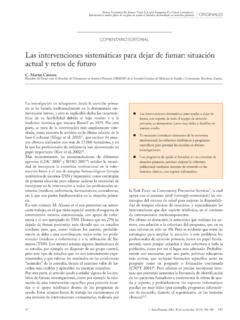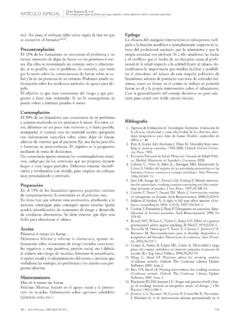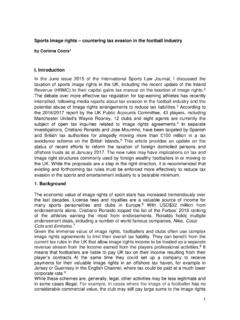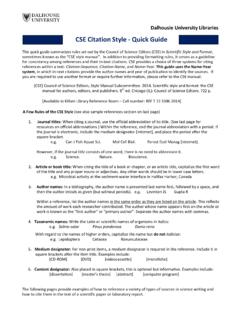Transcription of Calculation of Blast Loads for Application to ... - CORE
1 2013 Vasilis KARLOS George SOLOMOS Administrative Arrangement NoJRC 32253-2011 with DG-HOMEA ctivity A5 - Blast Simulation Technology Development Calculation of Blast Loads for Application to Structural Components Report EUR 26456 EN European Commission Joint Research Centre Institute for the Protection and Security of the Citizen Contact information George Solomos Address: Joint Research Centre, Via Enrico Fermi 2749, TP 480, 21027 Ispra (VA), Italy E-mail: Tel.: +39 0332 78 9916 Fax: +39 0332 78 9049 Legal Notice Neither the European Commission nor any person acting on behalf of the Commission is responsible for the use which might be made of this publication. Europe Direct is a service to help you find answers to your questions about the European Union Freephone number (*): 00 800 6 7 8 9 10 11 (*) Certain mobile telephone operators do not allow access to 00 800 numbers or these calls may be billed.
2 A great deal of additional information on the European Union is available on the Internet. It can be accessed through the Europa server JRC 87200 EUR 26456 EN ISBN 978-92-79-35158-7 issn 1831-9424 Luxembourg: Publications Office of the European Union, 2013 European Union, 2013 Reproduction is authorised provided the source is acknowledged. Printed in Italy Calculation of Blast Loads for Application to Structural Components Administrative Arrangement No JRC 32253-2011 with DG-HOME Activity A5 - Blast Simulation Technology Development Vasilis KARLOS George SOLOMOS European Laboratory for Structural Assessment December 2013 Contents 1. Introduction .. 1 2. Explosions and Blast waves .. 2 Ideal Blast wave characteristics.
3 2 Scaling laws .. 4 Explosive type and weight .. 5 Explosion and Blast -loading types .. 7 Blast wave 8 Surface burst and loading .. 15 Effect of finite reflecting surface .. 16 Dynamic 17 3. Calculation of structural Blast Loads .. 18 Blast pressure determination .. 18 Calculation of pressure Loads on building 24 Influence of openings .. 32 Combination rules .. 33 4. Summary of the Blast Loads Calculation .. 34 5. Case 37 Blast parameter Calculation examples .. 37 Blast wave pressure Loads for a small structure .. 40 Blast wave pressure Loads for element design .. 46 6. Conclusions .. 49 7. References .. 49 1 1. Introduction Over the last decades considerable attention has been raised on the behaviour of engineering structures under Blast or impact loading.
4 The use of explosives by terrorist groups around the world that target civilian buildings and other structures is becoming a growing problem in modern societies. Explosive devices have become smaller in size and more powerful than some years ago, leading to increased mobility of the explosive material and larger range effects. Usually the casualties from such a detonation are not only related to instant fatalities as a consequence of the direct release of energy, but mainly to structural failures that might occur and could result in extensive life loss. Famous examples of such cases are the bombing attacks at the World Trade Center in 1993 and on the Alfred P. Murrah Federal Building in Oklahoma City in 1995 .
5 In both of these incidents, structural failure, including glass breakage, resulted in far more victims and injuries than the Blast wave itself. After the events of the 11th September 2001 that led to the collapse of the World Trade Center in New York it was realized that civilian and government buildings, as well as areas with high people concentration (metro and train stations, means of mass transportation, stadiums etc.) are becoming potential bombing targets of terrorist groups. Since most engineering structures are vulnerable to such type of loading scenarios, a guide should be introduced to the designer in order to guarantee structural integrity even under those extreme situations.
6 The problem of structural resistance under explosive Loads has been under investigation for many years and has been well advanced in the military community. This is also the reason that the majority of these findings are not accessible to the public and are only restricted to military use. Nevertheless, some documentation that allows the prediction of the effects of an explosive Blast is available for use by design engineers. The Eurocode EN 1991-1-7 [1] makes reference to the case of accidental Loads and explosions, but it is mainly focused on impact actions, such as collisions from trucks, trains, ships, helicopters or any other vehicle in general. Reference is also made to gas explosions that take place in enclosed spaces but an overall approach for design under Blast external Loads is still missing.
7 Some design strategies are also recommended aiming to ensure increased robustness in building structures that are to endure localized failure. However, no guidelines are provided in EN 1991-1-7 for the Calculation of external Blast induced Loads . Of the several informative sources that can be found in the open literature [2-6] the most reliable and quoted references to date appear to be some USA military publications, and in particular a Technical Report [7] by Kingery and Bulmash (1984) and the Army Technical Manual 5-1300 [8]. This latter provides detailed information and procedures for the design of structures to resist the effects of explosions, it is periodically updated and a more functional version of it is currently ( ) available [9].
8 The development of a procedure that will give practical design solutions is essential for the design of new or the retrofitting of existing structures so as to be able to withstand the effects of explosive Loads . The engineer needs to calculate the acting forces according to a certain Blast scenario, which includes the type and weight of the used explosive, the 2 distance from the structure and the geometry of the surrounding area and the structure itself. These forces should then be applied on the structural system at hand in order to design structural members, sections and connections that will ensure sufficient robustness of the building to survive the effects of the computed actions.
9 In the current technical guide, an overview of a design procedure for structures under Blast loading is provided. The material presented has been collected from various sources and mainly from references [7-9]. The analysis focuses on ways to estimate Blast loading on structures and, to a lesser extent, on their response under such types of actions. Indicative examples of structures under explosive Loads are also analyzed in order to provide designers practical guidance on how to deal with similar cases. 2. Explosions and Blast waves Ideal Blast wave characteristics An explosion can be defined as a very fast chemical reaction involving a solid, dust or gas, during which a rapid release of hot gases and energy takes place.
10 The phenomenon lasts only some milliseconds and it results in the production of very high temperatures and pressures. During detonation the hot gases that are produced expand in order to occupy the available space, leading to wave type propagation through space that is transmitted spherically through an unbounded surrounding medium. Along with the produced gases, the air around the Blast (for air blasts) also expands and its molecules pile-up, resulting in what is known as a Blast wave and shock front. The Blast wave contains a large part of the energy that was released during detonation and moves faster than the speed of sound. Figure 1 shows the idealised profile of the pressure in relation to time for the case of a free-air Blast wave, which reaches a point at a certain distance from the detonation.
